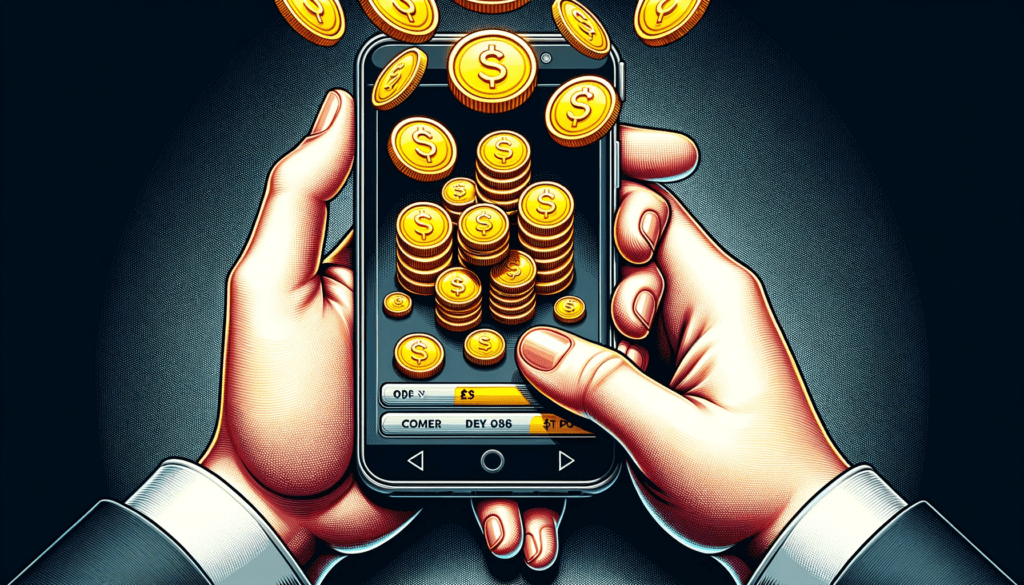In the palm of our hands, we hold the power to access entire worlds, challenges, and victories. With just a swipe, tap, or tilt, we can lead armies, build civilizations, or become a celebrity. Mobile games, in their bright colors and catchy tunes, promise momentary escapes and doses of dopamine. Yet, beneath their glossy veneer, there lurks a more sinister narrative, one where the lines between recreation and addiction blur, leading many down a path they never intended to walk.
The Siren Call of Instant Gratification
At the heart of every mobile game lies a beautifully designed algorithm, crafted meticulously to ensure players remain engaged. Game developers often harness principles of psychology to build games that tap directly into our brain’s reward centers. Every achievement, no matter how small, is celebrated with triumphant music, bursts of color, and virtual accolades. These digital rewards, though intangible, produce very real surges of dopamine—a neurotransmitter linked to pleasure and reward.
But there’s a catch. As with any form of stimulation, our brains quickly adapt. What was once a thrilling victory becomes just another level cleared. Players then chase tougher challenges and bigger rewards, often spending longer hours, and in some cases, real money, in pursuit of that initial high. This cycle mirrors the patterns observed in other forms of addiction, where individuals need more of the substance or behavior to achieve the same euphoric feeling.
And so, what starts as an innocent pastime can swiftly morph into a compulsive need. In the quest for virtual achievement, real-world responsibilities and connections might get sidelined, leaving players ensnared in a digital web, oblivious to the mounting consequences.
The Financial Sinkhole of In-App Purchases
The free-to-play model is predominant in the realm of mobile games. It entices players with a no-cost entry, but once immersed in the game, players encounter in-app purchases (IAPs). These microtransactions, often presented as shortcuts or enhancements, range from cosmetic upgrades like character skins to power-ups that can hasten a player’s progress.
On the surface, spending a dollar or two might seem harmless, perhaps even worth the price for the joy or advantage it brings in the game. However, these small expenses can quickly accumulate. Some games deploy a tactic known as “gacha” mechanics, where players spend money for a randomized item or character, leading to repeated purchases in hopes of obtaining a coveted prize.
The real danger lies not just in the sheer amount that players might end up spending, but in the altered perception of value. Within the game’s ecosystem, spending real money for virtual benefits makes perfect sense, fueled by a sense of urgency or competitiveness. But outside this digital bubble, that same money could have tangible utility – be it savings, essentials, or real-world experiences.
Moreover, the seamless integration of payment methods, like linking credit cards or using biometric confirmations, further diminishes the gravity of each transaction. For vulnerable individuals, especially younger players without a grasp on financial responsibilities, this can lead to significant financial strain, debt, and a distorted understanding of money’s value.
Skinner Boxes and Variable Ratio Reinforcement
Mobile games are often intricately designed to keep players coming back, and one of the most powerful psychological tools they employ is derived from B.F. Skinner’s operant conditioning chamber, commonly known as the Skinner Box. In this experiment, animals like pigeons or rats were placed inside a box with a lever. When pressed, the lever sometimes delivered food. The unpredictability of the reward – a mechanism called variable ratio reinforcement – led to the animals pressing the lever obsessively.

Translating this to mobile games, players are often rewarded at unpredictable intervals. Whether it’s a rare item, a streak bonus, or a surprise in-game event, this unpredictability keeps players hooked, continually seeking the dopamine rush of the next reward.
The visual of the Skinner Box serves as a stark representation of the underlying mechanics at play. Just as the mouse continually presses the lever in anticipation of a reward, players too find themselves trapped in a loop, always chasing the next high. The design isn’t coincidental; it’s grounded in deep psychological principles to maximize player engagement and, in many cases, their willingness to spend money.
This continuous loop can lead to an unhealthy obsession, where the boundary between the game’s virtual world and the real world becomes blurred. The very design that makes these games so engaging can also be the reason they become dangerously addictive.
Real Money, Virtual Items
Perhaps one of the most insidious aspects of mobile gaming addiction lies in the financial repercussions. With the rise of “freemium” games — games that are free to play but include in-game purchases — players often find themselves lured into spending real money to advance or enhance their gaming experience. These in-game purchases, known as micro-transactions, can range from cosmetic items like character outfits to ‘loot boxes’ that offer a randomized selection of in-game items.

What starts as a seemingly innocent $0.99 purchase can quickly snowball into hundreds or even thousands of dollars. The design of these games often places barriers or challenges that can be easily overcome by making a purchase, subtly pressuring players into parting with their money.
The visual of coins dropping into a smartphone underscores the seamless nature of these transactions. With just a click or tap, money is transferred, often without the tangible realization of spending. The psychological distance created by this digital transaction makes it easier for players to lose track of their spending, leading to financial strain and regret.
Moreover, it’s important to note that many mobile games target younger audiences who might not fully grasp the value of money. Stories of kids racking up huge bills on their parents’ credit cards are not uncommon, spotlighting the need for increased awareness and safeguards.
The Social Isolation Paradox
In an era of unparalleled connectivity, mobile games can ironically lead to profound social isolation. Players become so engrossed in the virtual world that they neglect real-world relationships. Friends, family, and even essential daily tasks can fall by the wayside, replaced by the immediate gratification of game achievements.
The paradox is evident: games that often promote social interaction — think multiplayer platforms or those that allow in-game chatting — inadvertently foster solitude. As players invest more hours, the distinction between virtual companionship and authentic human connection blurs. Over time, this can lead to feelings of loneliness, depression, and social anxiety.

Mobile games, when played in moderation, can be a source of relaxation, entertainment, and even cognitive development. However, like all good things, they come with their set of challenges. The key lies in recognizing the signs of addiction and taking proactive steps to ensure a balanced approach to gaming.
It’s essential to remain informed and vigilant. By understanding the potential pitfalls, players can enjoy mobile games without letting them take over their lives. In the end, the virtual world should complement, not replace, the rich tapestry of experiences and relationships in the real world.



I spent $28,000 on candy crush during the pandemic
i think game designers are studying hypnotism and cult dynamics to make their games more addictive!